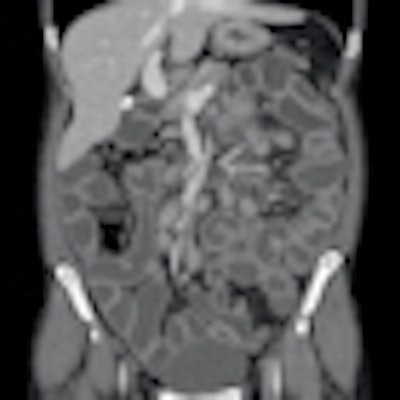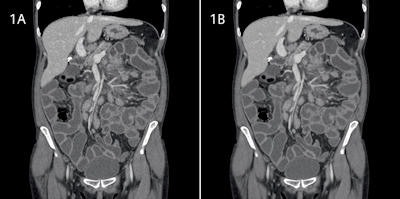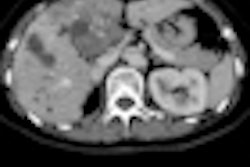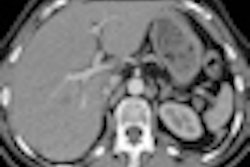
Adaptive iterative dose reduction (AIDR) significantly improves image quality and has the potential to decrease radiation dose when compared with filtered back projection (FBP) reconstruction, according to a European Radiology study published online on 16 September.
Although several innovations, such as automatic tube current modulation, exist, CT radiation dose remains a problem, primarily because of the limitations associated with FBP reconstructions, wrote Alban Gervaise from the Service d'Imagerie Médicale, Hôpital d'Instruction des Armées Legouest in Metz, France. Iterative reconstruction reduces not only dose but also image noise. AIDR has only been available at the Metz hospital since the summer of 2010; the researchers used a new reconstruction algorithm based on statistical iterative reconstruction techniques in their study. It can be adapted for large conebeam CT examinations and the particular 3D FBP used to reconstruct volumetric and wide-volume acquisitions.
 Image data reconstruction of an abdominal scan with standard filtered back projection at full dose (1A), and scanned at 60% lower dose while reconstructed with iterative reconstruction in image space (1B). Despite the fact that 1B was acquired at significantly lower dose, it shows the same low noise compared with the standard FBP at full dose. Image courtesy of Siemens Healthcare.
Image data reconstruction of an abdominal scan with standard filtered back projection at full dose (1A), and scanned at 60% lower dose while reconstructed with iterative reconstruction in image space (1B). Despite the fact that 1B was acquired at significantly lower dose, it shows the same low noise compared with the standard FBP at full dose. Image courtesy of Siemens Healthcare.Gervaise and colleagues sought to determine the effect of AIDR reconstructions on image quality and radiation dose in phantom and patient studies. The AIDR algorithm they used "reduces image noise through iteration loops in the reconstruction domain," they wrote. "Noise reduction is based on the comparison of images reconstructed with a pre-established noise model. The final iterative image and the original image are weighed and combined to create the AIDR image. The summation of the two images ensures that the spatial resolution is preserved whilst the overall image noise is reduced."
The researchers examined a phantom in volumetric mode on a 320-detector CT at tube currents ranging from 25 to 550 mAs. After reconstructing the images with AIDR and FBP, they compared the images. Then the researchers used AIDR on 15 CT exams of the lumbar spine in a prospective study.
In the phantom, they found no significant difference between FBP and AIDR reconstructions in terms of spatial resolution assessment. Image noise was lower with AIDR than with FBP images with a mean reduction of 40%. The contrast-to-noise and the signal-to-noise ratios improved with AIDR. In patients, image noise was significantly lower with AIDR (31%) than with FBP, the researchers wrote. Signal-to-noise ratio was also greater with AIDR than with FBP.
"Our phantom study confirms that at an equivalent dose and compared to the traditional 3D-FBP algorithm used for volumetric reconstruction, AIDR iterative reconstruction generates a significant reduction of image noise," they noted. "Interestingly, the reduction level is equivalent, regardless of the initial quality of the original images. This means that AIDR reconstruction shows similar performances in terms of noise reduction for images acquired at normal dose than for noisy images acquired at low dose."
The finding that significant noise reduction does not alter spatial resolution is critical because "in regular clinical practice, several other methods already enable the reduction of image noise," the researchers noted. However, those techniques cause degradation in spatial resolution or an increase of the delivered dose. AIDR iterative reconstruction reduces noise without altering spatial resolution and without increasing the dose.
Limitations of the study included the small number of patients, the choice of lumbar spine CT exams (this doesn't allow for comparison with other types of iterative reconstruction), not evaluating the diagnostic performance of the exam, and not studying AIDR's performance depending on the body habitus.
The researchers recommend more studies to confirm the radiation dose decreasing potential with AIDR.



















